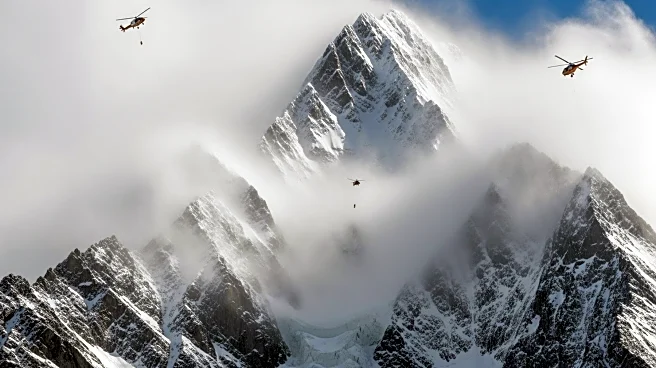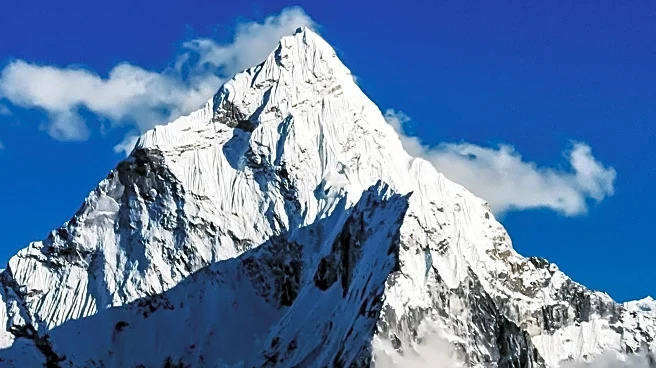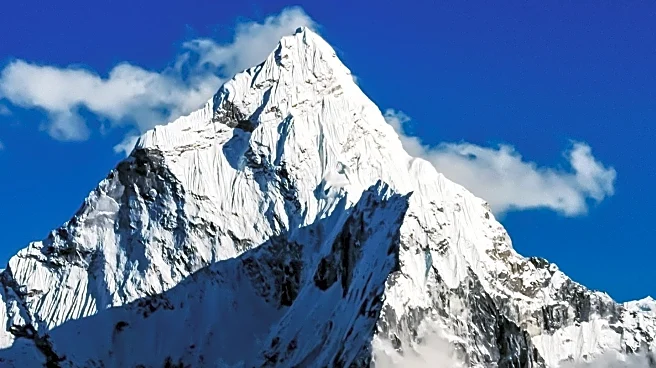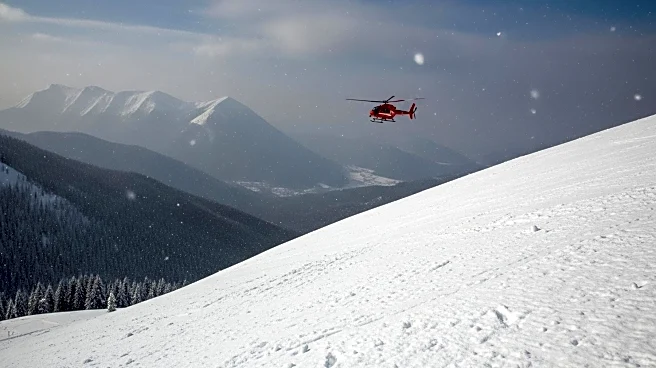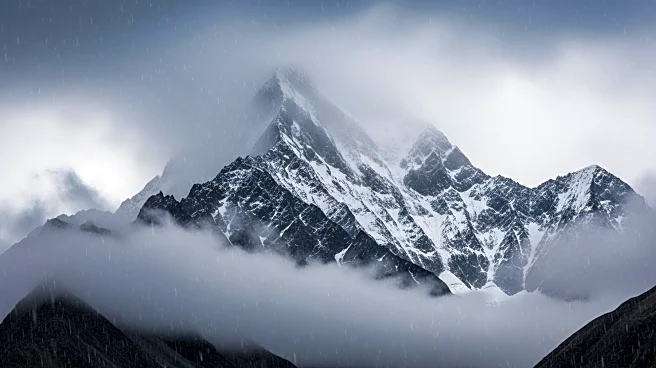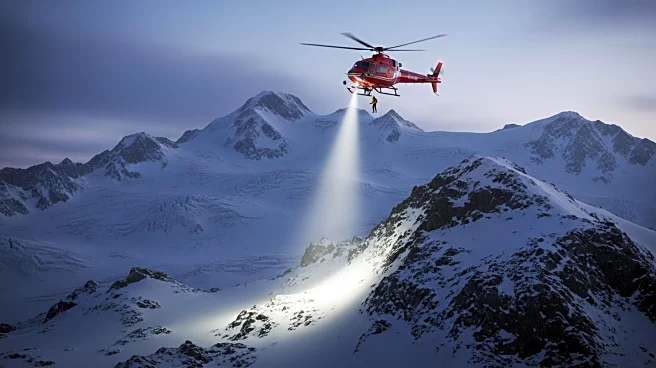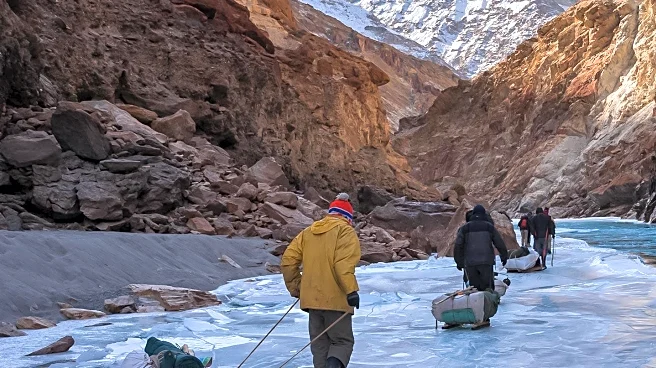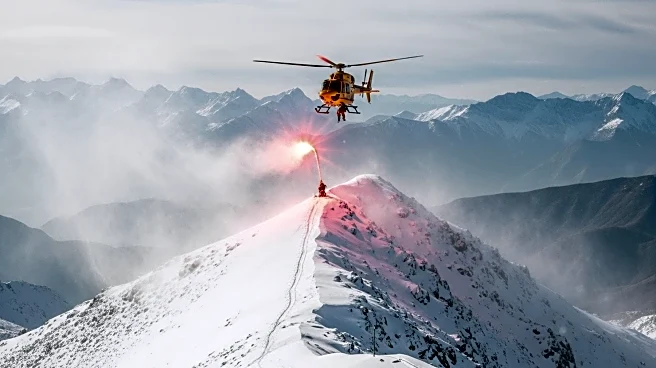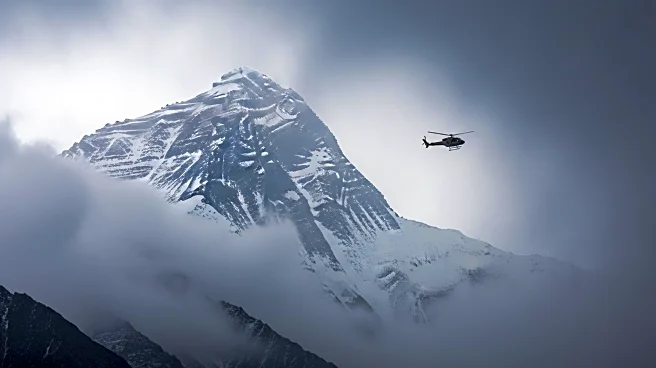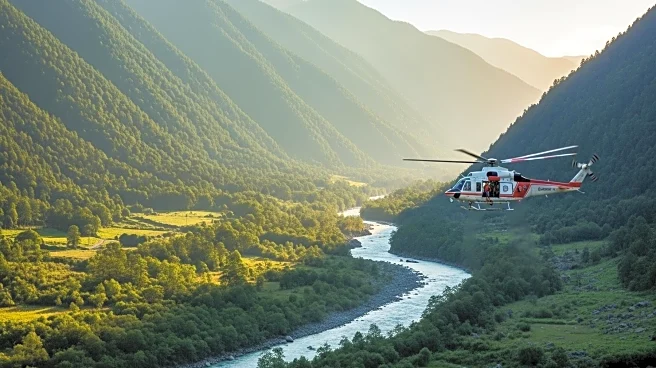What's Happening?
A blizzard has trapped nearly 1,000 people on the Tibetan side of Mount Everest, blocking roads and access to campsites on the mountain's eastern slope. Rescue operations are currently underway, with hundreds of local villagers and rescue teams deployed to clear the snow and facilitate access. The snowfall began on Friday evening and persisted through Saturday, leading to the suspension of ticket sales and entry to the Everest Scenic Area. Meanwhile, across the border in Nepal, heavy rains have caused landslides and flash floods, resulting in at least 47 fatalities and significant infrastructure damage.
Why It's Important?
The severe weather conditions on Mount Everest and in Nepal highlight the challenges faced by rescue operations in high-altitude and remote areas. The situation underscores the vulnerability of communities and tourists to natural disasters in mountainous regions. The impact on tourism, local economies, and infrastructure is significant, as these areas rely heavily on seasonal visitors. The events also emphasize the need for robust emergency response systems and international cooperation in disaster management, particularly in regions prone to extreme weather.
What's Next?
Rescue teams will continue efforts to clear access to the trapped individuals on Mount Everest, prioritizing safety and efficient evacuation. Authorities may assess the need for additional resources and support from neighboring regions or countries. In Nepal, recovery operations will focus on restoring infrastructure and providing aid to affected communities. Long-term strategies may involve enhancing weather forecasting capabilities and improving disaster preparedness to mitigate future risks.
Beyond the Headlines
The blizzard and subsequent rescue operations on Mount Everest highlight the broader implications of climate change and extreme weather patterns in high-altitude regions. These events may prompt discussions on sustainable tourism practices and the environmental impact of human activities in sensitive ecosystems. Additionally, the situation raises ethical considerations regarding the safety and regulation of adventure tourism in hazardous areas.

